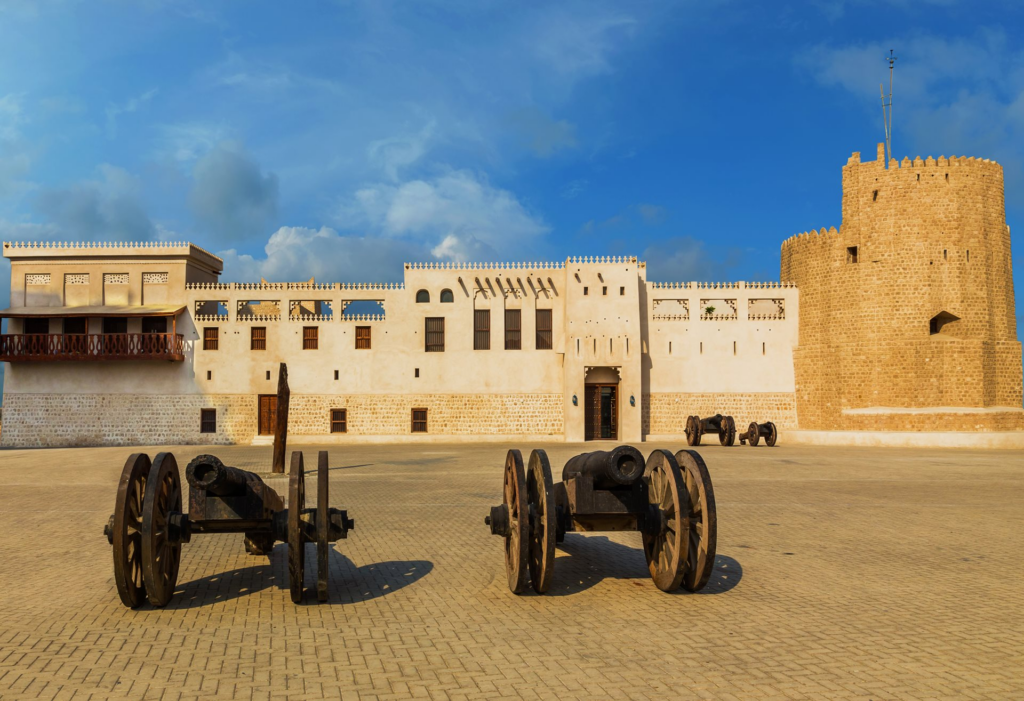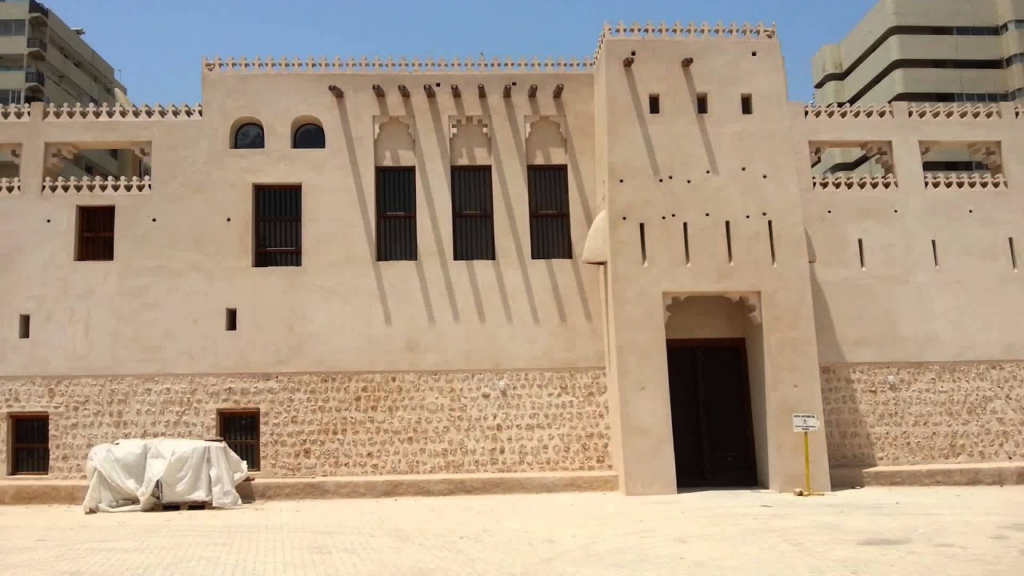The historic Sharjah Fort, a symbol of resilience and heritage, commemorates its remarkable 200 years of standing tall in the heart of the UAE. Erected in 1823, this architectural marvel has withstood the test of time and witnessed the transformation of the Emirati community. As part of the UAE National Day celebrations, the fort will come alive with a series of special events, tours, and free entry on December 1 and 2, allowing the community to delve into its rich heritage and explore the captivating stories concealed within its walls.
Sharjah Fort: A Glimpse into History
Sharjah Fort, or Al Hisn Sharjah, offers a captivating journey into the past. The site is a treasure trove of historical and cultural artifacts, preserving the heritage of its time. One of the most prominent exhibits is the legendary “dancing cannon” or Al Raggas cannon, a symbol of pride and military prowess used by Al Qawasim in battles.

Visitors can also marvel at a pearl magnifier, a tool for assessing the purity and value of pearls, which was meticulously stored in a sheep-skin pouch. The royal bed, once belonging to Sheikha Mahra Mohammed Khalifa Al Qasimi, gifted to the museum, is another highlight. This intricate piece boasts a four-step staircase and skillfully carved motifs, offering a glimpse into the opulence of its time.
Historical Artifacts on Display
Among the many historical artifacts, the fort houses Qawasim currency, a testament to the region’s economic history. A copy of the 1820 treaty signed by the British and Arab leaders is also on display. This pivotal treaty shaped British relations with the region for over a century, but it had significant implications for the Qawasim and other Arab rulers.

The fort’s exhibits extend to religious and cultural artifacts, including a Quran stand dating back to Sheikh Khalid bin Sultan Al Qasimi’s rule and Sheikh Sultan bin Saqr II’s passport, a relic from the Trucial State era.
Sharjah Fort’s Architectural Marvel
The fort itself is a testament to the ingenuity of its builders. Constructed using a combination of light brown plaster and coral stones abundant in the Arabian Gulf, it stands as a masterpiece of Emirati architecture. Teak wood doors, intricate ceiling patterns crafted from palm fronds, and mangrove tree columns add to its unique charm.

Also read: Exciting Battle Of The Bands Competition At City Walk Unplugged: Dhs20,000 Grand Prize
Despite facing numerous challenges throughout its history, the fort’s survival is a testament to its significance. In 1969, His Highness Sheikh Dr. Sultan bin Muhammad Al Qasimi undertook a monumental effort to salvage the fort from impending demolition. After meticulous restoration, it was transformed into a museum that chronicles Sharjah’s rich history.
Exploring the Sharjah Fort
The fort comprises two levels, a central courtyard, and three defensive towers named Al-Mahlousa, Al-Kabis, and Musharraf Square. The ground floor features various galleries, including the Madbasa Gallery, which explains the process of extracting date juice, and the Al-Qawasim Gallery, shedding light on the history of Al-Qawasim and their interactions with regional and foreign entities.
On the upper level, visitors can explore the Sheikh Sultan bin Saqr II Gallery, the Al-Kabis Tower, the weapons gallery, and the Sheikh’s room, among others.
As UAE National Day approaches, Sharjah Fort stands as a living testament to the nation’s heritage and resilience. The free entry and special events on December 1 and 2 offer an opportunity for the community to connect with this historical treasure and learn about the stories that have shaped the UAE’s modern history.












Leave a comment